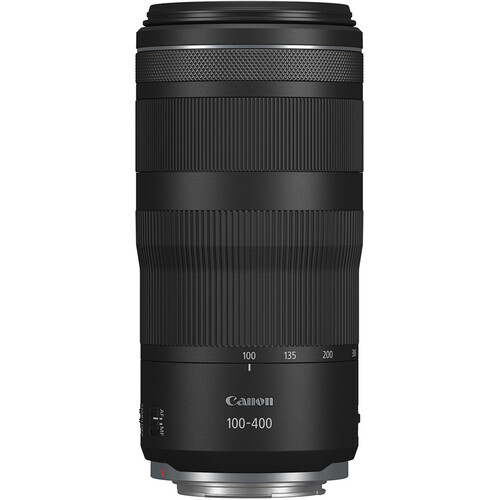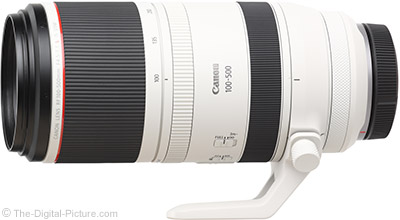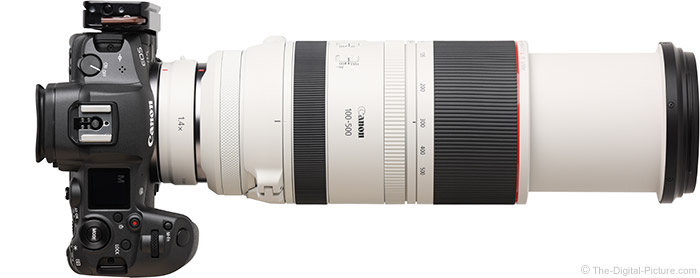Canon Rf 100-400 Vs 100-500: Unlocking the Ultimate Zoom Power
The Canon RF 100-400 lens and RF 100-500 lens are both versatile options for capturing a wide range of subjects. In terms of performance, the RF 100-500 offers a longer zoom range, allowing photographers to get closer to their subjects, while the RF 100-400 offers a slightly faster maximum aperture.
Both lenses deliver excellent image quality and are well-suited for wildlife, sports, and general telephoto photography. When choosing between the Canon RF 100-400 and the RF 100-500, it ultimately comes down to personal preference and specific shooting needs. It’s important to consider factors such as desired focal length range, budget, and size/weight when making a decision.
Regardless of which lens you choose, Canon’s RF lineup delivers impressive results.
Table of Contents
- Canon Rf 100-400 Vs 100-500
- Unleashing The Potential: Canon Rf 100-400
- The Ultimate Zoom Power: Canon Rf 100-500
- Unveiling The Winner: Canon Rf 100-400 Vs 100-500
- Frequently Asked Questions On Canon Rf 100-400 Vs 100-500
- What Is The Difference Between Canon Rf 100-400 And 100-500 Lenses?
- Which Lens Is Better For Wildlife Photography, Canon Rf 100-400 Or 100-500?
- Can I Use The Canon Rf 100-400 Or 100-500 Lens For Sports Photography?
- Is There A Significant Price Difference Between The Canon Rf 100-400 And 100-500 Lenses?
- Conclusion
- CallofPhotography
Canon Rf 100-400 Vs 100-500
Unleashing The Potential: Canon Rf 100-400
The Canon RF 100-400 lens is a versatile and powerful telephoto zoom lens for Canon’s RF mount cameras. With its exceptional design and build quality, it is built to withstand the rigors of professional use. The lens features a zoom range of 100-400mm, allowing photographers to easily frame subjects both near and far. Its focal length provides flexibility for sports, wildlife, and landscape photography.
The aperture range of f/5.6-7.1 and built-in image stabilization ensures sharp images even in challenging lighting conditions. The lens’s autofocus performance is fast and accurate, capturing subjects with precision. Photographers will appreciate the image quality and sharpness that this lens delivers.
When shooting in low-light conditions, the Canon RF 100-400 performs admirably, minimizing noise and producing clean images. Its handling and ergonomics are well-designed, providing a comfortable grip and easy access to controls.
Overall, the Canon RF 100-400 is a high-quality lens with a wide range of pros. However, it’s important to consider the cons such as its weight and cost. Ultimately, the choice between the Canon RF 100-400 and the Canon RF 100-500 depends on individual needs and preferences.
| Pros | Cons |
|---|---|
| Excellent image quality | Relatively heavy |
| Fast and accurate autofocus | Higher cost compared to some alternatives |
| Effective image stabilization | |
| Versatile zoom range |

Credit : www.static.bhphoto.com
The Ultimate Zoom Power: Canon Rf 100-500
The Canon RF 100-500 is a highly capable lens that offers an impressive zoom range and focal length, making it a versatile option for a wide variety of photographic needs. Its design and build quality are top-notch, ensuring durability and reliability in any situation.
Some of the key features and specifications of the Canon RF 100-500 include a maximum aperture of f/5.6, which allows for excellent low-light performance, and image stabilization to minimize camera shake and ensure sharp, clear images.
The autofocus performance of the Canon RF 100-500 is fast and accurate, allowing for quick and precise focusing, while the lens’ image quality and sharpness are outstanding, producing detailed and vibrant images.
When it comes to low-light performance and noise, the Canon RF 100-500 performs admirably, delivering clean and noise-free images even in challenging lighting conditions.
Handling and ergonomics of the Canon RF 100-500 are excellent, with a comfortable grip and intuitive controls that make it easy to use in the field. It also has a weather-sealed construction, providing protection against dust and moisture.
Overall, the Canon RF 100-500 is a high-quality lens that offers exceptional zoom power and versatility for photographers. However, it is important to consider the lens’ larger size and weight as potential drawbacks for some users.
Unveiling The Winner: Canon Rf 100-400 Vs 100-500
The Canon RF 100-400 and 100-500 are both excellent zoom lenses that offer a range of impressive features and specifications. Let’s dive into the key points of comparison:
| Features | Canon RF 100-400 | Canon RF 100-500 |
|---|---|---|
| Zoom Range and Focal Length | 100-400mm | 100-500mm |
| Aperture | Maximum f/5.6 | Maximum f/7.1 |
| Image Stabilization | Up to 5 stops | Up to 6 stops |
| Autofocus Performance | Silent and fast | Fast and accurate |
| Image Quality and Sharpness | Superb details and clarity | Excellent sharpness |
| Low-light Performance and Noise | Good performance with minimal noise | Impressive low-light capabilities |
| Handling and Ergonomics | Lightweight and comfortable to use | Solid build and easy to handle |
| Pros | Diverse zoom range, great image stabilization | Extended focal length, superior low-light performance |
| Cons | Relatively small maximum aperture | Slightly heavier and pricier |
| Use Cases and Scenarios | Wildlife, sports, and outdoor photography | Wildlife, birding, and telephoto landscapes |
| Price and Value for Money | Affordable and offers great value | Premium price for enhanced features |
When it comes down to the final verdict, both the Canon RF 100-400 and 100-500 have their strengths and limitations. The Canon RF 100-400 delivers excellent performance and versatility at a more affordable price, making it a solid choice for photographers looking for a reliable zoom lens. On the other hand, the Canon RF 100-500 offers an extended focal length, superior low-light capabilities, and enhanced image stabilization, making it ideal for professionals and enthusiasts who require the best possible performance in demanding situations. Ultimately, the choice between these two lenses depends on individual needs, preferences, and budget.

Credit: www.the-digital-picture.com
Frequently Asked Questions On Canon Rf 100-400 Vs 100-500
What Is The Difference Between Canon Rf 100-400 And 100-500 Lenses?
The main difference between Canon RF 100-400 and 100-500 lenses is the focal length range. The RF 100-400 offers a focal length range of 100-400mm, while the RF 100-500 offers a wider range of 100-500mm. This means that the RF 100-500 lens provides more telephoto reach, making it ideal for capturing subjects that are far away.
Which Lens Is Better For Wildlife Photography, Canon Rf 100-400 Or 100-500?
Both the Canon RF 100-400 and 100-500 lenses are great choices for wildlife photography, but the RF 100-500 lens offers a longer focal length range, which can be beneficial when photographing distant wildlife. With its 100-500mm range, the RF 100-500 lens allows you to get closer to your subjects without disturbing them, resulting in stunning wildlife shots.
Can I Use The Canon Rf 100-400 Or 100-500 Lens For Sports Photography?
Yes, both the Canon RF 100-400 and 100-500 lenses can be used for sports photography. Their versatile focal length ranges allow you to zoom in on the action, capturing fast-moving subjects with ease. Whether you’re shooting indoor or outdoor sports, these lenses offer the sharpness, speed, and image stabilization needed to capture crisp and dynamic sports shots.
Is There A Significant Price Difference Between The Canon Rf 100-400 And 100-500 Lenses?
Yes, there is a price difference between the Canon RF 100-400 and 100-500 lenses. The RF 100-400 lens is generally more affordable compared to the RF 100-500 lens due to its smaller focal length range. However, the price difference may vary depending on current promotions, discounts, and market demand.
Conclusion
With its versatility and outstanding image quality, the Canon RF 100-400 and 100-500 lenses are a tough choice for any photographer. Whether you need a shorter focal length range or want the added flexibility of a longer reach, both lenses deliver stunning results.
From wildlife photography to sports events, they provide the perfect solution. So, make your choice based on your specific needs and capture exceptional shots with these remarkable Canon lenses.
I am a photography enthusiast turned blogger, sharing my passion and expertise on her blog, "CallofPhotography." Growing up surrounded by nature, I developed a love for capturing moments through my lens. After studying Fine Arts with a focus on photography, I launched my blog to share tutorials, gear reviews, and my own photographic work. Through engaging storytelling, I invites readers to join her visual journey, inspiring and empowering photographers of all levels worldwide.


